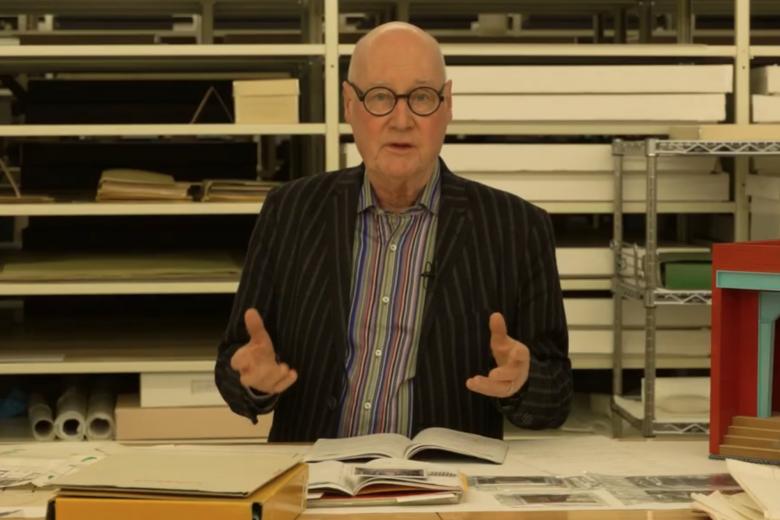Kurt W. Forster, 1935–2024
John Hill
11. January 2024
Kurt Forster speaking about Aldo Rossi in the CCA's “Find and Tell” program. (Photo: Screenshot from CCAchannel video embedded at bottom of this article)
Swiss-born architectural historian Kurt Forster, who held positions at the CCA, Getty Center, and ETH Zurich, among other institutions, died at his home in New York City on January 6 at the age of 89.
In his obituary at Arquitectura Viva, Luis Fernández-Galiano describes Forster as a “funambulist” because the historian's lengthy career was “an intellectual journey that walked with aplomb on the rope that ties Renaissance erudition to contemporary avant-gardes.” That journey took him from his native Switzerland and neighboring Germany to the East and West Coasts of the United States, back to Zurich, then Italy, to Montreal, and finally to New York. He was a professor, author, curator, and institutional director whose interests reached a wider public through articles, books, and exhibitions via the relationships with architects he fostered over the years.
Forster was born in Zurich in 1935 and studied at the Free University of Berlin, the University of Munich, and the University of Zurich, earning a PhD in the History of Art, Archaeology and Literature at the last in 1960. Also in 1960 he began teaching at Yale University, when Paul Rudolph was chair of the architecture department; that exposure to Rudolph reportedly sparked Forster's interest in contemporary architecture. Forster taught at Yale until 1967, and then at Stanford University in California from 1967 until 1982. Overlapping the Stanford years, Forster served as editor of Oppositions, the journal of the Institute of Architecture and Urban Studies (IAUS). He followed Peter Eisenman, Kenneth Frampton, and Anthony Vidler as editors, eventually editing 14 of its 26 issues, his last coming in 1982.
Then, in 1984, Forster helped create a "research institute with major library, archive, exhibition and publication series," per his LinkedIn profile, becoming the founding director of the Getty Research Center for the History of Art and the Humanities (now Getty Research Institute) in Southern California. On his departure in 1992, Forster articulated how something that started as a small museum library grew into "one of the nation's preeminent research centers for arts and culture." Most importantly, at least to people who appreciate Forster's role in the growing appreciation of contemporary architecture taking place then, his time at the Getty linked him to architects like Frank Gehry, whom he would write about frequently, most substantially with the hefty Frank O. Gehry: The Complete Works, done with Francesco Dal Co and released in 1998.
Cover of the first English edition of Frank O. Gehry: The Complete Works by Francesco Dal Co and Kurt W. Forster, published by The Monacelli Press in 1998.
After his near-decade at the Getty, Forster returned to Switzerland and took a position at ETH Zurich, directing the Institute for the History and Theory of Architecture from 1992 until 1999. As described by Marcel Bächter in an obituary at Hochparterre, “thanks to [Forster], in the 1990s people were suddenly studying with Frank Gehry, Daniel Libeskind, Kazuyo Sejima and Peter Eisenman.” The last two — Eisenman and Sejima — would be aligned with Forster again following his time at ETH: In 2004, when Forster directed the Venice Architecture Biennale under the theme “Metamorph,” he gave Eisenman the Golden Lion for Lifetime Achievement and Sejima, with Ryue Nishizawa, won a Golden Lion for the presentation of SANAA's 21st Century Museum of Contemporary Art in Kanazawa.
Forster's time between his stints at ETH Zurich and the Biennale was spent in Montreal, where he served as director of the Canadian Centre for Architecture (CCA). Notable exhibitions held at the CCA between 1999 and 2004 include Herzog & de Meuron: Archaeology of the Mind, curated by Philip Ursprung, and Mies in America, curated by CCA founder Phyllis Lambert. Forster's intellectual journey then took him back to Yale University in New Haven, Connecticut, where he was professor and director of doctoral studies in the School of Architecture from 2005 until his death last week.

